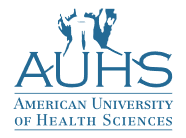Author: Dr. Sandor Szabo, MD, PhD, MPH
Professor, American University of Health Sciences, Signal Hill/Long Beach, CA
Edited by: Christina Yoo, AA, BA, MA
COVID-19 (coronavirus disease – 2019) caused by the SARS-CoV-2 virus is a new and complex infectious disease. Because of its sudden and unexpected appearance at the end of 2019 and early 2020, that found most of the countries unprepared, it’s not surprising that the new disease created a lot of confusion, panic and chaos that almost predictably led to stress. I have written an invitational review article on this topic (“COVID-19: New disease and chaos with panic, associated with stress”) in March and April 2020 that has just been published (1) https://mspsss.org.ua/index.php/journal/article/view/281. In this short summary, I will focus only on the stress-aspect of COVID-19.
Based on the original definition of biological stress by its discoverer Hans Selye, “Stress is the nonspecific response of the body to any demand made upon it” (2). Chaos and anxiety are often seen in epidemics, especially when it grows to a pandemic level. As a recent article stated, “Crisis response has always been chaotic.”:

By definition, stress should be caused by different factors (stressors), which elicits similar neuroendocrine changes, such as the rapidly released catecholamines and sustained, elevated levels of secreted glucocorticoids (2). The multifactorial etiology is almost given in a pandemic such as, e.g., anxiety about getting infected, what the future may bring, depression, isolation, family arguments in closed quarters, real or perceived food shortages, unemployment, (temporary) loss of income, all culminating in increased domestic violence and suicides. The more psychological, societal, and physical stressors hit us, the more serious the resultant distress reaction becomes.
The distress may involve all segments of the population, but the most severely affected are the healthcare workers (e.g., emergency room and intensive care unit doctors and nurses), and contact tracers. The additional stress on healthcare workers, besides almost all the other factors that hit any segment of society, are the long hours they must put in, in part because of the shortages of doctors and nurses, lack of sufficient personal protective equipment, triaging patients that cannot be saved either due to the lack of respirators or hospital beds, witnessing dying patients, etc. No wonder that in some hospitals, nurses and others demonstrate, demand improvements or even those who refuse to work to protect themselves and their families from potential exposure to the new virus. All this is compounded by the fact that thousands of doctors and nurses died worldwide, apparently in a much larger percentage than any other segment of professional people.

Nevertheless, there are a few remedies in the pandemic stress, and fortunately, the social media and lay press are full of stress-reduction exercises, diets, and other measures. Among these ones of the simplest, science-proven intervention is the “relaxation response” (3), meditation, yoga and the easy, seven-minute workout (4). All these should be preceded or associated with a healthy diet (with a lot of vegetables, minimal carbohydrates, and salt), plenty of hydration, daily exercise (at least 30 min of walking), breathing exercises, and (if available) plenty of sunshine. If none of these steps help, to avoid going into a deep depression or alcoholism, or domestic violence, obtaining professional help from licensed mental health experts is crucial.
References
- Szabo S. COVID-19: New disease and chaos with panic, associated with stress. Med. Sci., 2020;59:41-62.
- Szabo S., Tache Y, Somogyi A. The legacy of Hans Selye and the origins of stress research: A retrospective 75 years after his landmark “letter” in Nature. Stress, 2012;15:472-478.
- Distress reduction with the seven-minute workout. USA Today, January 8, 2018.
- Mitchell M. Stress – Dr. Herbert Benson’s relaxation response: Learn to counteract the physiological effects of stress. Psychology Today, March 29, 2013.
